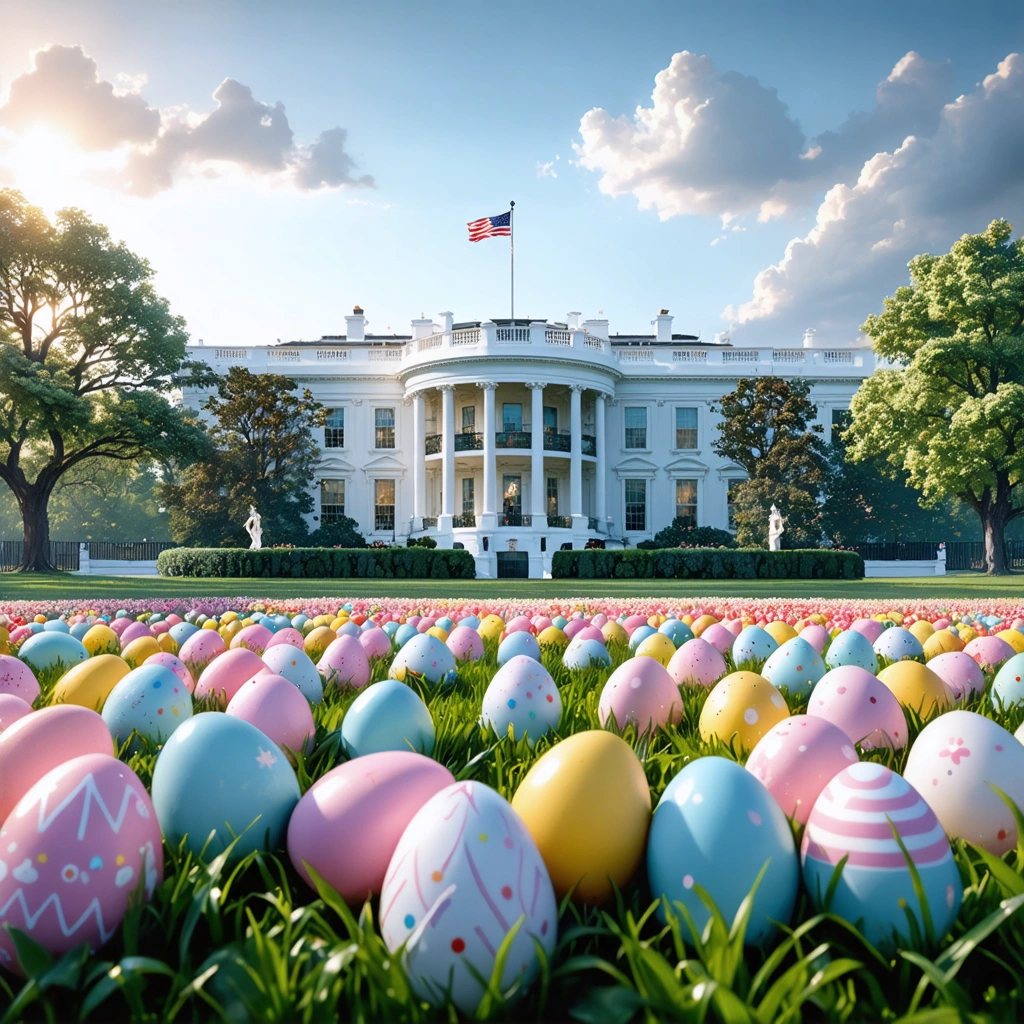
An Evolving Tradition: From History to Modern Sponsorship
The White House Easter Egg Roll, a beloved American tradition that traces its roots back to the presidency of Rutherford B. Hayes, is entering a new phase. With an eye toward enhancing the event’s financial sustainability and capturing media attention, the administration has initiated a plan to recruit corporate sponsors. This evolution represents a strategic pivot, blending historical legacy with modern business practices to create an event that not only celebrates heritage but also drives engagement through brand partnerships.
Historical Significance and Evolution
For decades, the White House Easter Egg Roll has served as a community outreach effort, inviting children and their families to partake in playful activities on the White House lawn. Traditionally characterized by its communal spirit and low-key environment, the event now faces transformation under the influence of corporate involvement. Such involvement is designed to meet the demands of a digitally connected society where events need to resonate beyond their immediate geographical audiences.
Corporate Sponsorship: Business Goals and Strategic Alignment
This initiative is aimed at opening up avenues for dialogue between government institutions and the private sector. By inviting corporate sponsors to participate, the event is set to benefit from:
- Increased funding and resource allocation
- Enhanced engagement through brand storytelling
- Opportunities for cross-promotional campaigns
- Broader media exposure on national and international platforms
Such partnerships foster a symbiotic relationship between the government and the private sector. While sponsors gain significant visibility through association with a historic event, the White House secures essential financial backing and modernized event logistics.
Strategies for Effective Partnership and Implementation
The success of this revamped Easter Egg Roll hinges on the mutual interests shared by corporate entities and the traditions of the White House. The administration has outlined several strategies designed to promote transparency, maintain the event’s integrity, and forge lasting bonds with sponsors.
Establishing Clear Partnership Guidelines
A core component of this strategy is the development of clear guidelines to navigate potential conflicts of interest while preserving the character of the event. These guidelines are intended to:
- Define the level and nature of corporate involvement
- Ensure that both political and social values are upheld
- Create robust oversight committees to monitor sponsorship activities
- Maintain a balance between public tradition and commercial interests
The guidelines serve as a framework to ensure that all participating sponsors adhere to ethical standards that are consistent with the legacy of the White House while supporting innovative initiatives.
Innovative Marketing and Branding Initiatives
To maximize the benefits of corporate sponsorship, the White House plans to employ a multi-layered marketing strategy that includes:
- Digital Advertising: Leveraging modern social media platforms to boost the event’s profile.
- Content Marketing: Creating a series of educational and entertaining content pieces that highlight the event’s tradition and its new corporate partner contributions.
- Interactive Experiences: Integrating augmented reality (AR) and interactive installations to provide unique experiences for participants.
- Community Engagement: Organizing pre-event campaigns that involve local communities and diverse demographics to broaden overall participation.
These marketing initiatives are designed not only to promote the event but also to demonstrate how public-private partnerships can be used effectively in high-profile settings.
Financial and Logistical Considerations
Integrating corporate sponsorship into a government event requires meticulous planning and prudent financial stewardship. The evolving structure of the Easter Egg Roll is guided by robust financial frameworks that ensure efficient resource allocation and sustained investment.
Budget Allocation and Resource Management
A comprehensive financial model has been developed to manage the influx of sponsorship funds and to ensure that their utilization aligns with the event’s goals. Key components of this model include:
| Budget Area | Corporate Contribution | Government Funding |
|---|---|---|
| Event Logistics | 50% | 50% |
| Marketing & Promotion | 70% | 30% |
| Security and Safety | 40% | 60% |
| Community Outreach | 30% | 70% |
This table illustrates the balanced approach towards leveraging corporate funding while ensuring that governmental oversight guarantees the tradition’s integrity and public accessibility.
Risk Management and Contingency Plans
Risk management is integral to the event’s overarching strategy, particularly given the intersection of politics, public sentiment, and corporate interests. Major risks involve:
- Perceived over-commercialization of a historic event
- Potential conflicts of political and commercial messages
- Logistical challenges posed by higher turnout and greater media coverage
To mitigate these risks, a comprehensive contingency plan has been established that includes:
- Establishment of a dedicated crisis management team
- Development of robust internal communication channels
- Regular stakeholder meetings to ensure alignment
- Frequent reviews of sponsorship contracts to preempt conflicts
This systematic approach to risk and resource management is designed to safeguard the event’s legacy while embracing modern imperatives.
Implications for Future Public-Private Partnerships
The innovative approach to the White House Easter Egg Roll is expected to set a precedent for future collaborations between government institutions and private entities. The model reflects a broader trend where traditional public events are reinvigorated with commercial partnerships to enhance visibility and sustainability.
Potential Long-Term Benefits
As the public sector adapts to contemporary expectations, the successful integration of corporate sponsorship may lead to further advancements such as:
- Increased public engagement through dynamic and interactive event formats
- Enhanced funding for not only the event but other heritage preservation initiatives
- Strengthened relationships between government and corporate sectors, paving the way for additional innovative projects
- Development of scalable models that can be applied to other national traditions and events
Broader Policy and Cultural Impacts
The White House Easter Egg Roll serves as a microcosm of how modern public policy can embrace business innovation without sacrificing tradition. The symbiotic relationship between government and corporate sponsors is poised to yield benefits that extend into broader cultural and economic domains. These benefits include:
- Enhanced national branding through globally recognized events
- Opportunities to engage younger demographics who are more attuned to digital and interactive experiences
- Strengthened financial models that reduce the economic burden on public funds
- Innovative insights into event management that inform future governmental initiatives
Ultimately, the transformation of the Easter Egg Roll reflects a strategic effort to modernize historical events, ensuring they remain relevant and engaging in today’s fast-paced, digital-centric world.
Conclusion: Balancing Tradition with Innovation
In conclusion, the decision to incorporate corporate sponsorship into the White House Easter Egg Roll represents a well-calculated balance between honoring longstanding traditions and embracing contemporary financial and marketing strategies. As the event evolves, its success will depend on maintaining the delicate balance between commercialization and the preservation of cultural values. The administration’s proactive approach exemplifies how government institutions can foster innovation while building on historical legacies.
This new framework serves as an inspiring model for future public-private partnerships, demonstrating that with careful planning, risk management, and strategic marketing, even the most historic events can be revitalized for the modern age, offering both economic benefits and enhanced public engagement through thoughtfully executed corporate collaborations.




